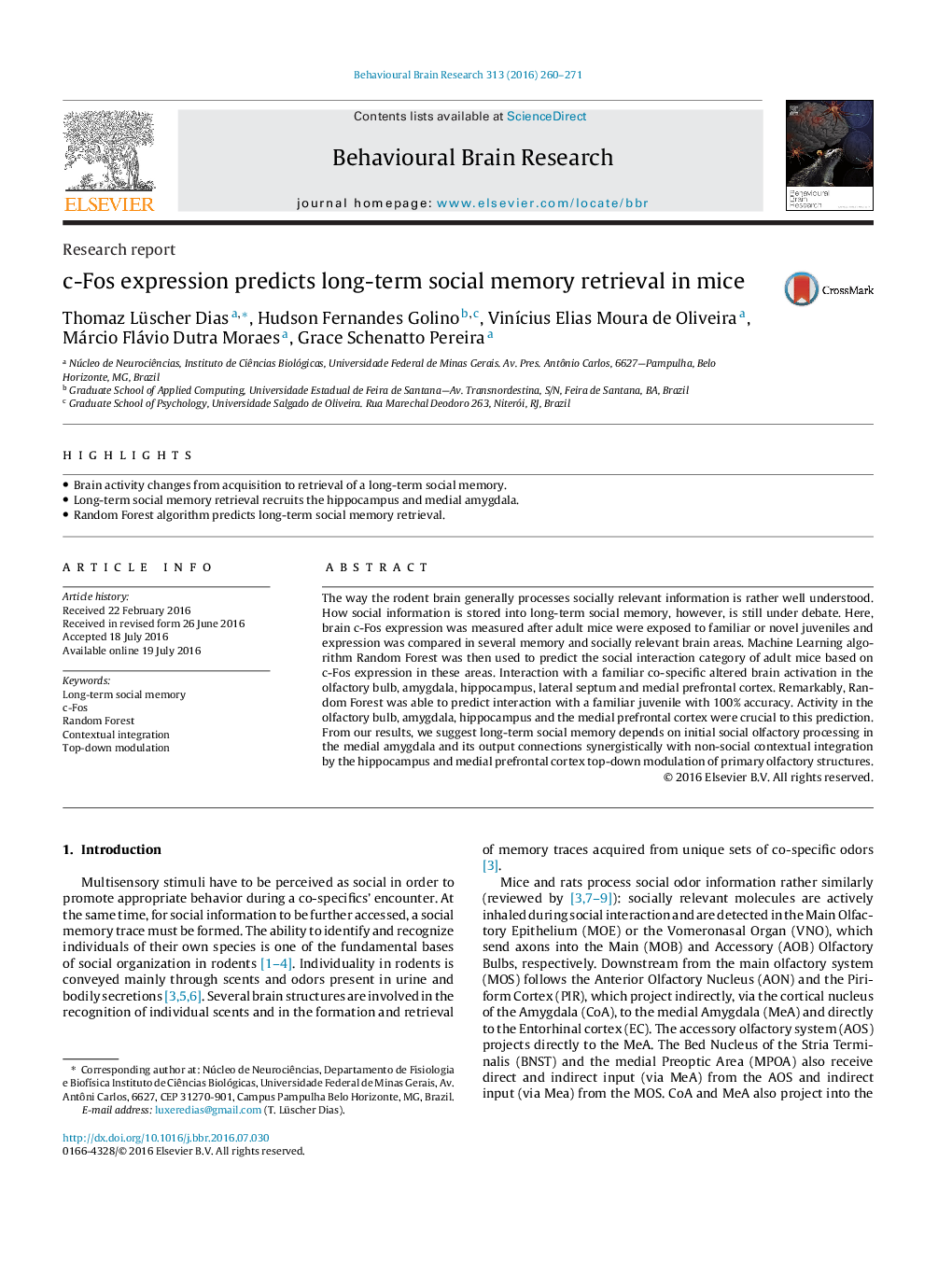| Article ID | Journal | Published Year | Pages | File Type |
|---|---|---|---|---|
| 6255842 | Behavioural Brain Research | 2016 | 12 Pages |
â¢Brain activity changes from acquisition to retrieval of a long-term social memory.â¢Long-term social memory retrieval recruits the hippocampus and medial amygdala.â¢Random Forest algorithm predicts long-term social memory retrieval.
The way the rodent brain generally processes socially relevant information is rather well understood. How social information is stored into long-term social memory, however, is still under debate. Here, brain c-Fos expression was measured after adult mice were exposed to familiar or novel juveniles and expression was compared in several memory and socially relevant brain areas. Machine Learning algorithm Random Forest was then used to predict the social interaction category of adult mice based on c-Fos expression in these areas. Interaction with a familiar co-specific altered brain activation in the olfactory bulb, amygdala, hippocampus, lateral septum and medial prefrontal cortex. Remarkably, Random Forest was able to predict interaction with a familiar juvenile with 100% accuracy. Activity in the olfactory bulb, amygdala, hippocampus and the medial prefrontal cortex were crucial to this prediction. From our results, we suggest long-term social memory depends on initial social olfactory processing in the medial amygdala and its output connections synergistically with non-social contextual integration by the hippocampus and medial prefrontal cortex top-down modulation of primary olfactory structures.
